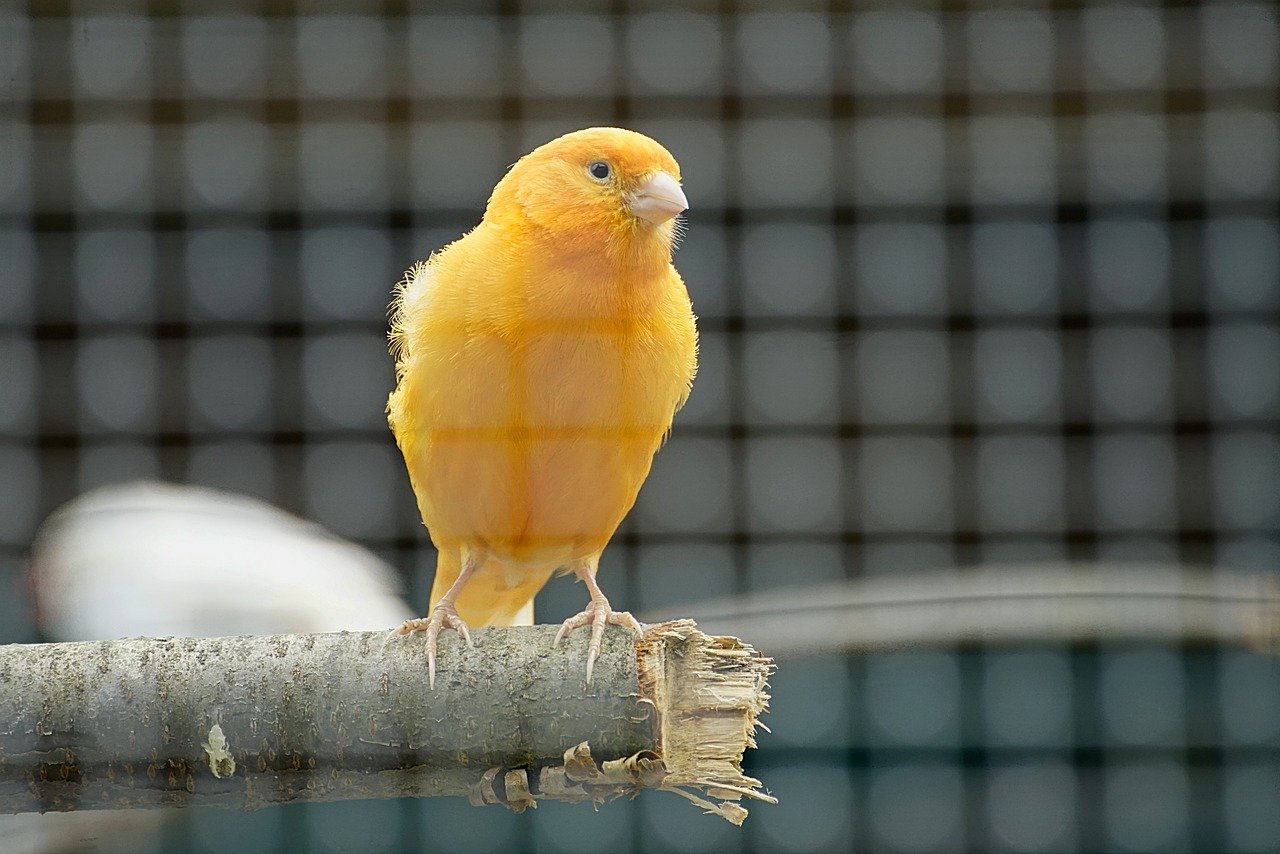The Canary

‘Grinding poverty, ‘Working poor’, ‘A life of hardship’ – cliches that came to life for my grandmother during her early married life. Strength and resilience overlayed days that were colourless, bleak, filled with getting by and through. Pleasure was found in very few corners of life.
In older age, after the children left home, life began offering a little more. Pennies began to cover more than survival; small treats were possible. One of these treats was spied in a shop window and visited for weeks until finally the purchase was made. A tiny, shiny-eyed, yellow feathered canary. A bright yellow flash of pleasure that came so late in life. A purchase unheard of in those earlier poverty-filled years. No one remembers this tiny bird’s name – only the uncharacteristic joy he gave my grandmother.
It seems generally agreed, ornithologically speaking, that it is the boy canaries that do the singing, so I say “He” as this wee bird sang his heart out. Yet my grandmother was not a great fan of boys. “Oh, I suppose you will have a big bouncing boy” she commented on hearing about my first pregnancy. Said with great emphasis and disdain on the “bouncing boy”.
Yet this wee boy she treasured. Providing a small cage of painted green metal, with a small, latched door. The interior of the cage was filled with the perches and perks that birds were thought to enjoy: seed dispenser, a tiny bell, a small hideaway. A metaphor for my grandmother’s later life – everything you needed, with no frills and nothing more than necessary.
After a lifetime without pets, this was a new side for her children and grandchildren to watch with amazement. We grandchildren would gently poke fun at our uncharacteristically sparkling, grandmother as she chattered lightly to her tiny yellow bird. The bird chirpily responding with a sing-song reply.
His cage would be regularly swept and cleaned – just as her own home was kept. No modern equipment, all by hand, always sparkling clean, with everything in its place. A ritual daily routine was followed for the little yellow bird, fitting in with her own rigid and routine schedule. Always early rising with the birdsong. The birdcage would be uncovered at dawn, the coal range lit, porridge made, and daily chores began. In the evening after supper, it would be early to bed, after chores were completed. The little cage would be covered for the night – silence prevailed.
Sometimes on a warm sunny day, the whole cage was emptied taken outside and thoroughly cleaned top to bottom. The wee bird was temporarily housed safely inside.
For a special treat bird and cage were taken outside. The bottom of the cage was removed, and a little yellow bird would be found chirping, hopping, and bobbing around on the grass within his cage. My grandmother was convinced he was soaking up the sensation of grass under his little feet.
On one such day my grandfather, returning from an outing, came around the corner of the house and spied the little canary hopping about in his cage on the grass. The day was cooling, my grandmother was busy with chores. Helpfully he picked up the cage to bring it inside.
That little yellow treasure sat high up in a tree for some time, despite pleas and coaxing he refused to return. Despite all the previous losses in her life my grandmother never quite recovered from the loss of her little yellow canary – nor did she ever forgive my grandfather.